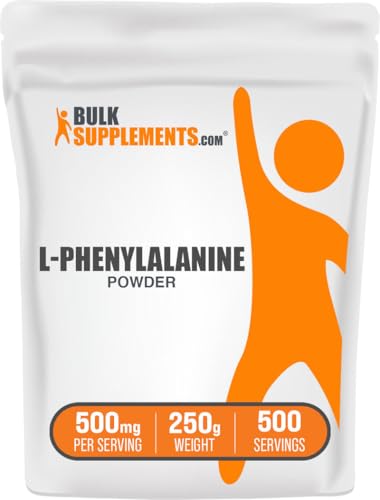Protein Timing for Muscle Growth: Best Way to Eat After a Workout?
Quick Summary: A new study found that eating 20 grams of whey protein every 3 hours after a workout helped build more muscle than eating smaller amounts more often or larger amounts less often. This suggests that how you space out your protein intake can impact muscle growth.
What The Research Found
This research looked at how different ways of eating protein after a workout affect muscle building. The best approach was to eat 20 grams of whey protein every 3 hours. This method boosted muscle protein synthesis (MPS), which is how your body builds and repairs muscle, more effectively than eating smaller amounts more frequently or larger amounts less often.
Study Details
- Who was studied: 24 healthy, trained men.
- How long: The study looked at the effects over a 12-hour period after a resistance exercise (weightlifting) session.
- What they took: All participants consumed a total of 80 grams of whey protein, but in different ways:
- Group 1 (PULSE): 10 grams every 1.5 hours
- Group 2 (INT): 20 grams every 3 hours
- Group 3 (BOLUS): 40 grams every 6 hours
What This Means For You
- Timing Matters: If you're trying to build muscle, spreading your protein intake throughout the day after a workout might be better than eating it all at once or in very small doses.
- Consider 20g Every 3 Hours: For optimal muscle building, aim for about 20 grams of whey protein every 3 hours after your workout. This can help maximize muscle protein synthesis.
- Whey Protein is Key: This study used whey protein. Whey protein is a fast-digesting protein, which may be ideal for post-workout recovery.
Study Limitations
- Only Men: The study only included trained men, so the results might not be the same for women, people who are not trained, or older adults.
- Short-Term: The study only looked at the effects over 12 hours. It doesn't tell us if this protein timing leads to more muscle growth over the long term.
- Whey Only: The study only used whey protein. Other types of protein might have different effects.
- More Research Needed: The study doesn't explain exactly why this timing works best, just that it does.
Technical Analysis Details
Key Findings
The study found that consuming 20 g of whey protein every 3 h (INT protocol) during a 12 h post-exercise recovery period significantly increased myofibrillar protein synthesis (MPS) compared to both 8 × 10 g every 1.5 h (PULSE) and 2 × 40 g every 6 h (BOLUS). MPS was elevated by 88–148% above baseline across all groups (P < 0.02), but INT outperformed PULSE and BOLUS by 31–48% (P < 0.02). BOLUS induced greater phosphorylation of anabolic signaling molecules (e.g., mTOR, p70S6K), while PULSE showed the lowest signaling activity. Gene expression of MuRF-1 (muscle breakdown marker) and SLC38A2 (amino acid transporter) was higher with BOLUS, suggesting potential trade-offs for prolonged recovery.
Study Design
This was an observational study involving 24 healthy, trained males (age, body composition unspecified). Participants performed a resistance exercise bout followed by 12 h of recovery with protein intake distributed as PULSE, INT, or BOLUS. Muscle biopsies and blood samples were collected at rest and at 1, 4, 6, 7, and 12 h post-exercise to measure MPS rates via l-[ring-13C6] phenylalanine tracer techniques, along with mRNA expression and cell signaling markers.
Dosage & Administration
Total daily protein intake was standardized at 80 g of whey protein per group:
- PULSE: 10 g every 1.5 h (8 doses).
- INT: 20 g every 3 h (4 doses).
- BOLUS: 40 g every 6 h (2 doses).
Protein was ingested orally, with MPS measured using a stable isotope tracer (l-[ring-13C6] phenylalanine) infused intravenously.
Results & Efficacy
- MPS rates: INT increased MPS by 31–48% compared to PULSE and BOLUS (P < 0.02) over 12 h.
- Anabolic signaling: BOLUS > INT > PULSE hierarchy in phosphorylation of mTOR (P = 0.001) and p70S6K (P = 0.003).
- Gene expression: BOLUS elevated MuRF-1 (muscle breakdown) and SLC38A2 (amino acid transport) mRNA levels, suggesting transient stress responses.
- Temporal effects: MPS peaked at 1–4 h post-exercise but remained elevated in INT until 12 h.
Limitations
- Sample specificity: Only trained males were studied; results may not generalize to females, untrained individuals, or older populations.
- Short duration: Outcomes reflect acute (12 h) MPS responses, not long-term muscle hypertrophy or strength gains.
- Protein source: Findings are limited to whey protein; slower-digesting proteins (e.g., casein) might alter results.
- Observational design: Causality for signaling pathways cannot be definitively established.
Clinical Relevance
For trained individuals aiming to optimize muscle repair and growth, consuming 20 g of whey protein every 3 h post-exercise appears superior to smaller, more frequent (10 g/1.5 h) or larger, less frequent doses (40 g/6 h). This protocol balances sustained MPS stimulation with manageable feeding frequency. However, the study does not confirm whether these acute effects translate to greater muscle mass over time or apply to other populations. Athletes should prioritize consistent protein intake timing alongside total daily protein goals, while future research should explore mixed protein sources and long-term outcomes.
Note: The study used phenylalanine as a tracer to measure MPS, not as a supplement. Results pertain to protein distribution strategies, not phenylalanine supplementation itself.
Original Study Reference
Timing and distribution of protein ingestion during prolonged recovery from resistance exercise alters myofibrillar protein synthesis.
Source: PubMed
Published: 2013
📄 Read Full Study (PMID: 23459753)




